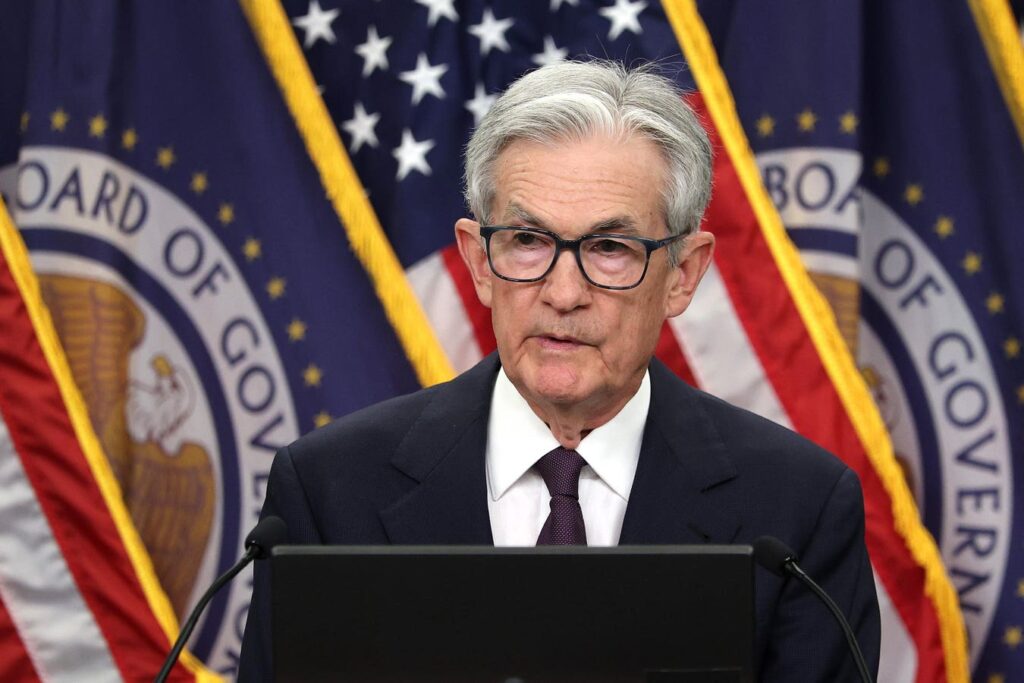Although recent indicators suggest that economic activity has continued to expand at a solid pace. The unemployment rate remains low, and labor market conditions remain solid. Inflation remains somewhat elevated. However, the Federal Reserve’s Federal Open Market Committee (FOMC) announced that interest rates will remain unchanged.
Fed officials are taking a wait-and-see approach regarding President Trump’s trade policies – including tariffs – that have constantly evolved since “Liberation Day” on April 2, 2025. It is the fourth straight FOMC meeting without an interest rate cut. While small business owners hoping for lower rates were disappointed, the central bank has not ruled out rate cuts in 2025. It depends on inflation.
Federal Reserve Chair Jerome Powell explained during his press conference in Washington on Wednesday, June 18, that it takes time for tariffs to work through the goods chain of distribution and that many goods being sold today by U.S. retailers were imported into the country months before President Trump imposed tariffs. They impact on inflation hasn’t really been felt yet.
“So we’re beginning to see some effects, and we do expect to see more of them over coming months,” he said. “We do also see price increases in some of the relevant categories, like personal computers and audio visual equipment and things like that attributable to tariff increases.”
Related: What Trump’s Tariffs Will Mean For Small Businesses
There also are concerns about unrest related to immigration policies, as well as foreign events, such as the current Iran-Israel military conflict, which the Fed chair says he is watching.
“It is a time of real change,” he said. “Our focus is how to keep inflation low and employment high.”
At his Washington, D.C. press conference, Chair Powell reiterated – as he does at each meeting – that the FOMC seeks to achieve maximum employment and inflation at the rate of 2% over the longer run.
“Uncertainty about the economic outlook has diminished but remains elevated,” Powell said. “The Committee is attentive to the risks to both sides of its dual mandate.”
In support of these goals, the FOMC has decided to maintain the target range for the central bank’s benchmark federal funds rate at 4 ¼ % to 4 ½ %. In considering the extent and timing of future adjustments to the target range for the federal funds rate, the Fed will carefully assess incoming data, the evolving outlook, and the balance of risks.
Related: 3 Reasons Small Businesses Should Borrow At Today’s Interest Rates
“The Committee is strongly committed to supporting maximum employment and returning inflation to its 2% objective,” Powell said.
In formulating monetary policy, the Fed will continue to monitor the implications of incoming information for the economic outlook and is prepared to adjust the stance of monetary policy as appropriate if risks emerge that hinder the attainment of its dual objectives. Its assessments will consider a wide range of information, including readings on labor market conditions, inflation pressures, and financial and international developments.
Interest Rates and Small Business
Small business loans are usually variable loans. A drop in rates would cut the cost of capital for businesses that have existing loans and would make borrowing more palatable in the future.
While many business owners were disappointed by that the Fed did not lower interest rates, it is important to keep in mind that the near 0% rates we saw in the period March 25, 2020 until Feb. 28, 2022 are unlikely to be occur again any time soon.
Over the last two decades, the Federal Funds rate has had dramatic peaks and valleys. After the 2008 financial crisis, the rate was cut to near zero until December 2015. gradually increasing. The central bank gradually increased the rate, and in June 2018, it reached 2%. After that, the highest pre-COVID rate was a six-month stretch of 2.5% from December 2018 until June 2019. With such a long period of very low rates, it is easy to forget that prior to the downturn of 2007, the Federal Funds rate usually was in the mid single digits.
Related: Federal Funds Rate History 1990 to 2025
The signals are that the Federal Reserve may lower rates later this year. However, the timing and the extent of the cuts depend on factors such as the impact of tariffs on inflation. Chair Powell said the FOMC is adapting in real-time to the effects of tariffs and that “uncertainty about the economic outlook is diminishing, but still elevated.”
Other wildcards in the equation are the labor market, and international events, such as the current Israel-Iran military showdown.
The good news is that overall, we are in a pretty good economy, as Chair Powell acknowledged at his press conference. Inflation is relatively low, especially compared to 2023 and 2024, but it has not yet reached to the Fed’s target of 2%.
Small business owners seem to be optimistic toward the future, as earnings are rising and inflation is low, although not yet at 2%. The NFIB Small Business Optimism Index increased by three points in May to 98.8, slightly above the 51-year average of 98. Some key measures:
- The percentage of owners expecting better business conditions rose 10 points from April, and the percentage that expect higher real sales volumes rose 11 points from April (seasonally adjusted).
- Twenty-two percent plan capital outlays in the next six months, up four points from April and the highest reading of this year.
- When asked to rate the overall health of their business, 14% reported excellent (up one point), and 55% reported good (down one point). Twenty-eight percent reported the health of their business was fair (up one point) and 4% reported poor (unchanged).
“While the economy will continue to stumble along until the major sources of uncertainty are resolved, owners reported more positive expectations on business conditions and sales growth,” said NFIB Chief Economist Bill Dunkelberg.
With SMB earnings on the rise for much of the first half of 2025, this is still a good time for business owners to invest in their companies, and indications are that many are doing so. Many forecasters predict that the first cut may come as early as September if inflation and job data continue to move in the right direction.
Chair Powell explained the FOMC’s stance on interest rates this way: “We think our policy is well positioned right now to deliver (a strong labor market and price stability)…We will be able to respond in timely way as the data leads us. The economy has been resilient.”
Two days later, Federal Reserve Governor Christopher Waller told CNBC on Friday that he doesn’t expect tariffs to boost inflation significantly and that policymakers might look to lower interest rates as early as next month.
Read the full article here











